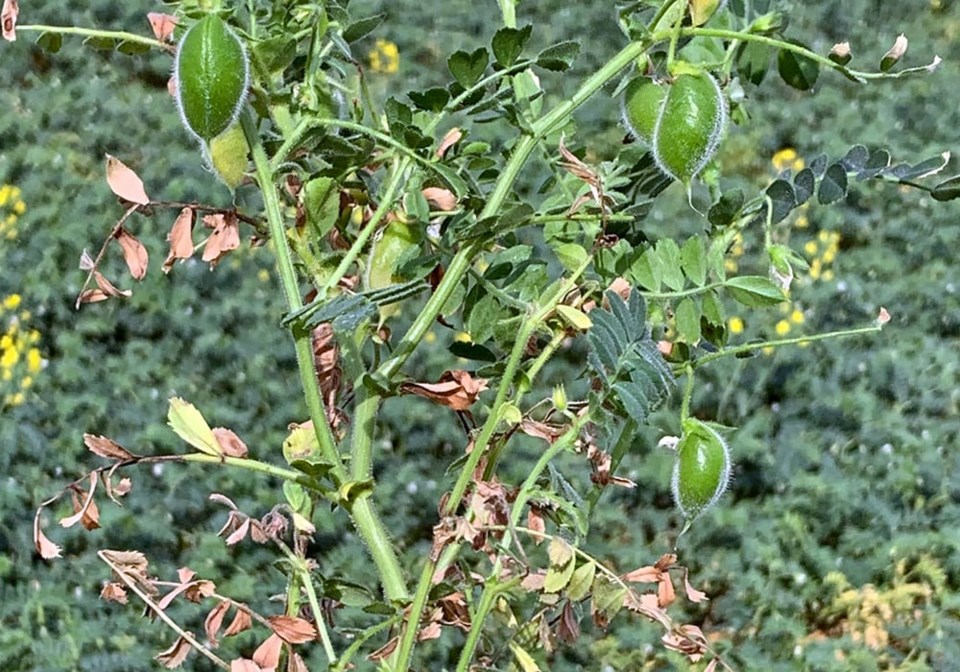WESTERN PRODUCER — India’s winter pulse crop production will fall well short of the government’s official estimate, says a leading pulse analyst from that country.
G. Chandrashekhar, senior editor of The Hindu Business Line, is forecasting 15 million tonnes of rabi pulse production.
India’s Ministry of Agriculture is predicting 19.65 million tonnes by comparison.
The biggest difference is their chickpea estimates. Chandrashekhar is forecasting 11 million tonnes versus the government’s record 13.6 million tonne estimate.
Chandrashekhar told the Global Pulse Confederation during a video interview that his number is still a big crop, considering India’s annual chickpea consumption is less than nine million tonnes.
His lentil estimates is identical to the government’s at 1.6 million tonnes, up from last year’s crop of 1.3 million tonnes.
“It makes sense because we have an additional 300,000 hectares (741,000 acres) more land planted to lentils,” he said.
Chandrashekhar noted that India’s annual lentil demand exceeds two million tonnes, so there will still be room for imports.
However, India’s lentil import duty exemption is set to expire on March 31, 2023. He doesn’t know what will transpire after that.
Gaurav Jain, analyst with AgPulse Analytica, is forecasting a similar rabi pulse harvest as last year’s 1.9 million tonnes, which is more in line with the government’s official forecast.
“While desi chickpea production will be 750,000 tonnes to one million tonnes lower than 2022, we expect lentil production to be up around 400,000 tonnes, kabulis by 250,000 tonnes and an uptick in other pulses to compensate the rest of the desi chickpea losses,” he said in an email.
His lentil number would be the same as the other two forecasters, at around 1.6 million tonnes.
“We expect India to import 600,000 to 700,000 tonnes of lentils in 2023-24, nearly 150,000 tonnes lower than 2022-23,” said Jain.
Canadian lentil prices had been firming before Australia revised its lentil estimate on March 7 to 1.4 million tonnes, up from its December forecast of 1.05 million tonnes. That is about twice the size of a normal Australian harvest.
Jain said March is a critical month for rabi pulse development in India. February was hotter than normal, but there are no indications that March weather will harm yields substantially, he said.
Chandrashekhar said pigeon pea prices are well above the government’s minimum support price due to a poor kharif (summer) harvest last year.
He worries about the fate of the next kharif crop of pigeon peas as well.
The U.S. National Ocean and Atmospheric Administration believes there is about a 50 percent chance that an El Nino weather event will develop this summer.
That would create dry conditions for India’s next pigeon pea crop, which would be developing/maturing during that period.
“It would be really disastrous for India,” said Chandrashekhar.
“Let’s hope and pray that it doesn’t happen.”
Imported green lentils are sometimes used as a substitute for pigeon peas.
Jain said India’s current pigeon pea shortfall is being met by imports of the crop from other countries, so he doubts there will be more green lentil imports than usual for the time being.
AgPulse Analytica is forecasting 800,000 tonnes of pigeon pea imports for 2022-23 as well as 2023-24.
Jain is not as concerned as Chandrashekhar about the effects of El Nino on this year’s kharif crops.
Forecasters are calling for neutral ENSO conditions until July, by which time India’s southwest monsoon will be receding.
However, if conditions shift to a strong El Nino there could be ramifications for next year’s rabi (winter) crop.
Jain noted that the Indian government has adopted multiple measures to control domestic food price inflation.
“We can expect the government to get more aggressive for the next 14 to 15 months, as general elections are looming,” he said.
Contact [email protected]

